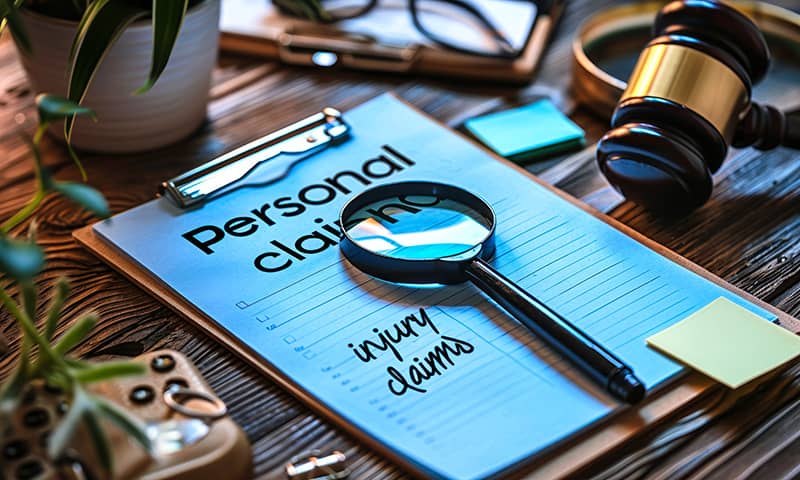What Are the Elements of Negligence in Personal Injury?

In New York, negligence forms the foundation of injury claims, from slip-and-falls to car accidents and medical malpractice cases. But what exactly does negligence mean in legal terms, and how do you prove it?
Negligence, in its simplest form, is a failure to exercise reasonable care, resulting in harm to another person. It’s the legal equivalent of saying, “You should have been more careful, and because you weren’t, someone got hurt.”
But proving negligence isn’t as simple as it might sound. There are specific elements that must be established, and each plays a vital role in building a strong case.
The Four Core Elements of Negligence
In New York, as in most jurisdictions, there are four primary elements of negligence that must be proven:
1. Duty of Care
First things first: did the person who caused the harm have a legal obligation to be careful? This is what we call the “duty of care.” It might sound abstract, but it’s actually quite common in everyday life.
Drivers owe a duty of care to others on the road. Property owners owe a duty to keep their premises safe for visitors. Doctors owe a duty to provide competent medical care.
The extent of this duty can vary depending on the situation. For instance, New York law recognizes different levels of care owed to different types of visitors on a property. A business owner might owe a higher duty to a customer than to a trespasser.
2. Breach of Duty
Once we establish that a duty existed, the next step is to show that it was breached. This is where we ask: did the person fail to meet the expected standard of care? In legal terms, we often compare the person’s actions to what a “reasonable person” would have done in the same situation.
For example, if a driver runs a red light, that’s a clear breach of the duty to drive safely. It’s not what a reasonable, careful driver would do. But sometimes, the breach isn’t as obvious, and that’s where things can get tricky.
3. Causation
This element has two parts: actual cause and proximate cause. Actual cause is straightforward – did the breach directly lead to the injury? Proximate cause is a bit more complex. It asks whether the injury was a foreseeable result of the breach. In other words, could the person have reasonably anticipated that their actions (or inactions) might lead to this kind of harm?
4. Damages
Finally, there must be actual harm or damages. This could be physical injuries, property damage, or even emotional distress in some cases. It’s not enough to say, “Well, something bad could have happened.” There needs to be tangible harm that can be compensated.
In New York, damages can include medical expenses, lost wages, pain and suffering, and more. The specific types and amounts of damages available can vary depending on the nature of the case.
How to Prove Negligence in Court
Now, proving these elements isn’t always straightforward. The burden of proof in negligence cases lies with the plaintiff – that’s the person bringing the claim. In New York, as in most civil cases, the standard is “preponderance of the evidence.” This means you need to show that it’s more likely than not that each element of negligence exists.
Evidence can come in many forms. Medical records, eyewitness testimony, expert opinions, and physical evidence from the scene can all play a role. For instance, in a car accident case, we might use police reports, traffic camera footage, and testimony from accident reconstruction specialists to prove negligence.
Types of Negligence Claims
Negligence isn’t a one-size-fits-all concept. It can apply to a wide range of situations:
- Personal injury cases, like slip and falls or car accidents
- Medical malpractice, where healthcare providers fail to meet the standard of care
- Wrongful death claims, where negligence leads to a fatality
- Property damage cases, where someone’s carelessness harms your property
Each type of case may have its own nuances and specific legal requirements. For example, New York has specific laws governing medical malpractice claims, including a statute of limitations that’s generally shorter than for other types of negligence cases.
Comparative and Contributory Negligence
Here’s where things can get a bit more complex. What if both parties were somewhat at fault? New York follows a pure comparative negligence rule.
This means that if you’re found to be partially at fault for your own injury, your damages will be reduced proportionally to your degree of fault. Unlike some states, in New York, you can recover damages even if you’re found to be more than 50% at fault for the accident.
This rule can significantly impact the outcome of a case. For instance, if you’re awarded $100,000 in damages but found to be 30% at fault, your award would be reduced to $70,000. Even if you were found to be 90% at fault, you could still recover 10% of the damages.
It’s important to note that while this system allows for recovery in most cases, it also means that defendants can argue for a reduction in damages by proving some degree of fault on the plaintiff’s part. This is why having skilled legal representation is crucial in navigating these complex cases.
Defenses Against Negligence Claims
Of course, defendants have ways to fight back against negligence claims. Common defenses include:
- Assumption of risk: arguing that the plaintiff knowingly put themselves in harm’s way
- Statute of limitations: claiming that too much time has passed to file a lawsuit (in New York, this is generally three years for personal injury cases)
- Contributory negligence: as mentioned earlier, arguing that the plaintiff’s own negligence contributed to their injury
Understanding these defenses is crucial for building a strong case. We need to anticipate potential arguments and be prepared to counter them effectively.
Get Legal Help with Your Personal Injury Claim
At Held, Held & Held, we have years of experience handling negligence cases in New York. We know how to gather the right evidence, build a compelling case, and negotiate with insurance companies.
More importantly, we understand that behind every case, there’s a person who’s been hurt and is seeking justice. We’re here to guide you through the legal process, explain your rights, and fight for the compensation you deserve.
If you’ve been injured and believe someone else’s negligence might be to blame, don’t wait to seek help. Contact Held, Held & Held today for a free consultation. We’ll review your case, explain your options, and help you decide on the best path forward. Remember, in New York, you generally have two years from the date of injury to file a negligence claim, so time is of the essence. Let us put our experience to work for you and help you seek the justice and compensation you deserve.
